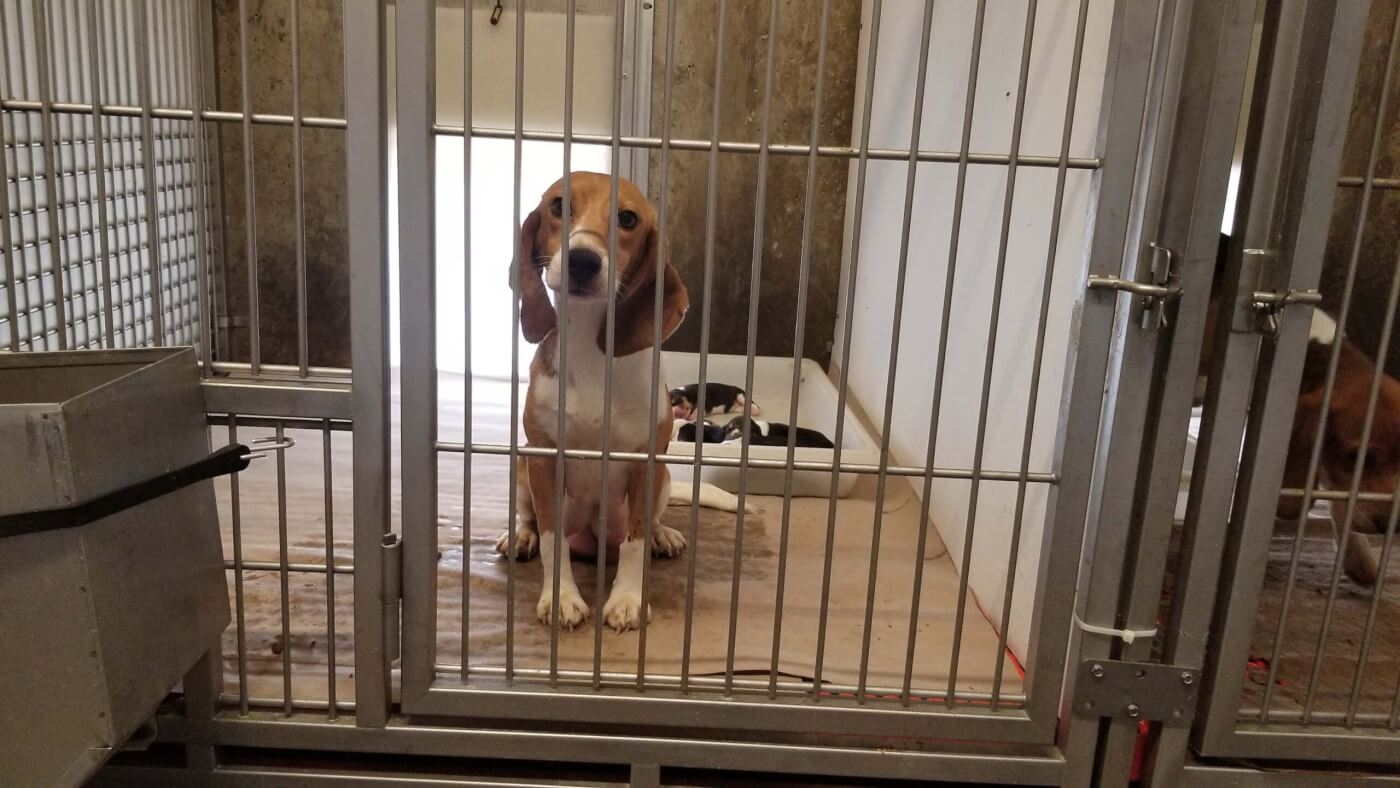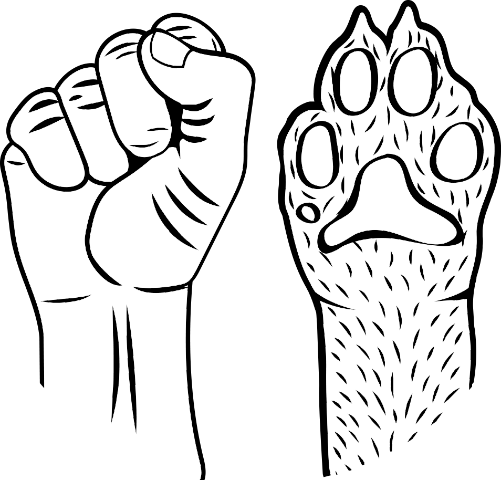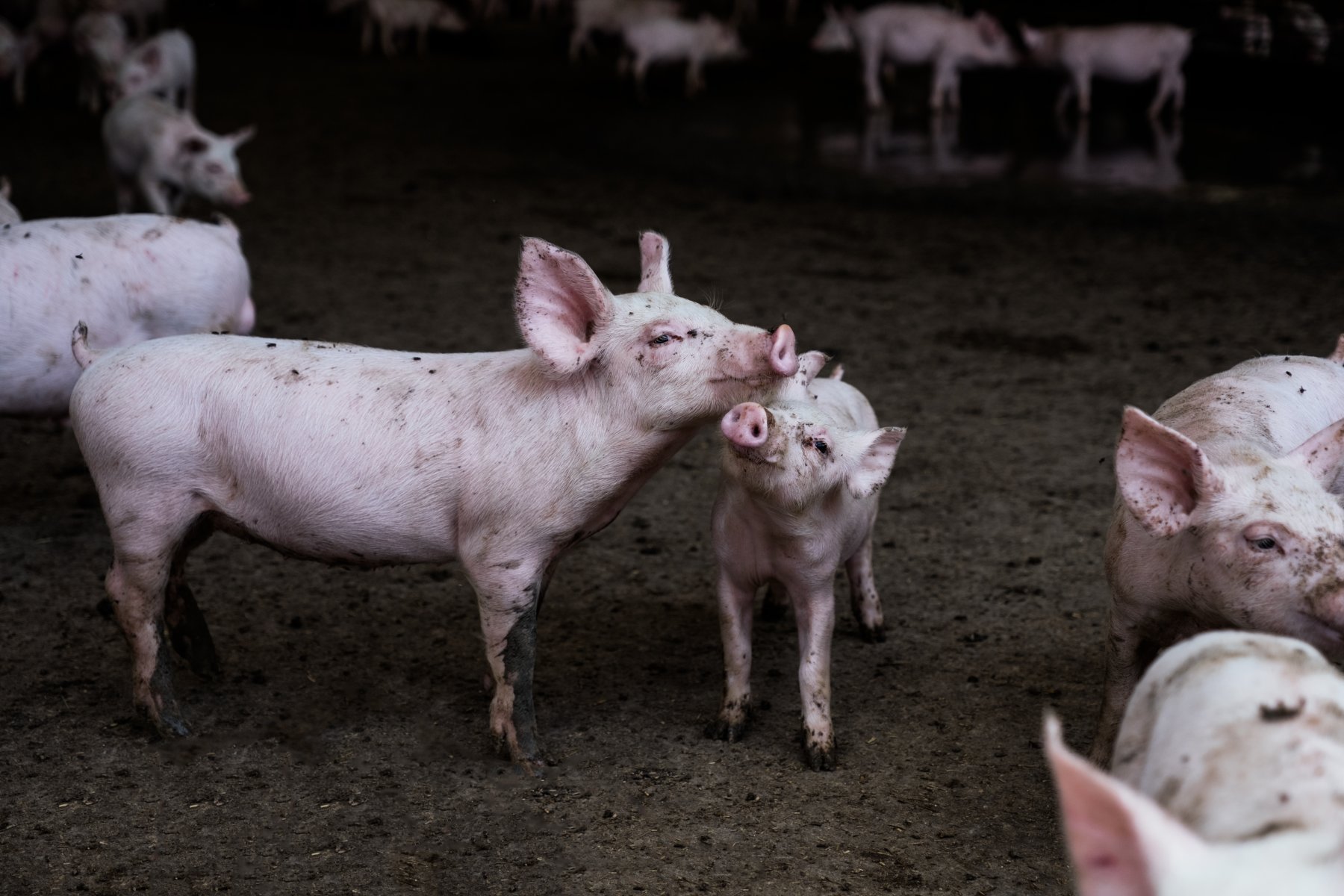
This Is How Pigs Raised for Food Are Treated
Many people who know pigs often compare them to dogs because they’re friendly, loyal, and intelligent. But unlike the dogs we share our homes with, the majority of pigs in Australia are kept on factory farms, where they spend their entire lives in cramped, filthy warehouses under the constant stress of intensive confinement. In fact, 90% of the 6 million pigs slaughtered each year in Australia are intensively or factory farmed.
If you thought the bacon on your plate came from a pig who had a good life and was humanely killed, think again.
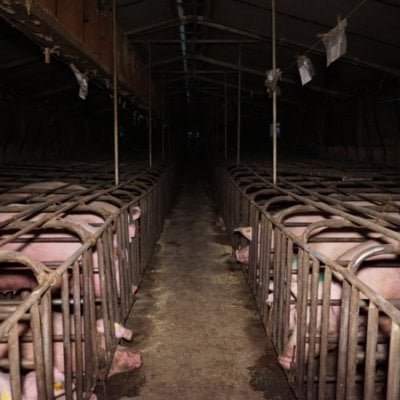
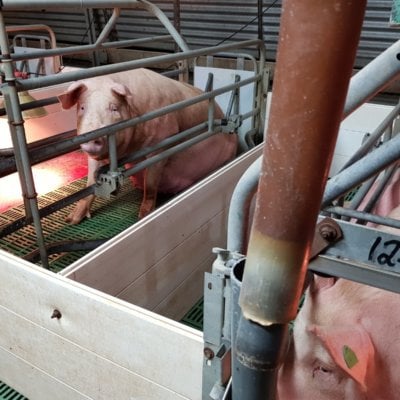
Sow Stalls and Farrowing Crates
A mother pig (or sow) may be confined to a gestation crate (aka “sow stall”) or farrowing crate for much of her adult life.
A gestation crate is a metal-barred cage that’s too small for a pig even to turn around in. She’s able to move only a few inches forward or backward, and she often suffers from pressure sores caused by the hard surface she’s forced to lie on for up to six weeks at a time.
About a week before she gives birth, a sow is moved to another restrictive stall known as a farrowing crate. This is even narrower than the gestation crate but has a separate area around it for piglets. Many piglets die within the first few weeks after birth, and those found to be sick or injured can be legally killed via blunt trauma to the head, which the Model Code of Practice for the Welfare of Animals: Pigs states can be carried out with a “hammer or other suitable solid heavy object.”
After just a few weeks, the piglets are torn away from their distraught mother, who is impregnated by artificial insemination again and again until her body gives out and she’s sent to slaughter.
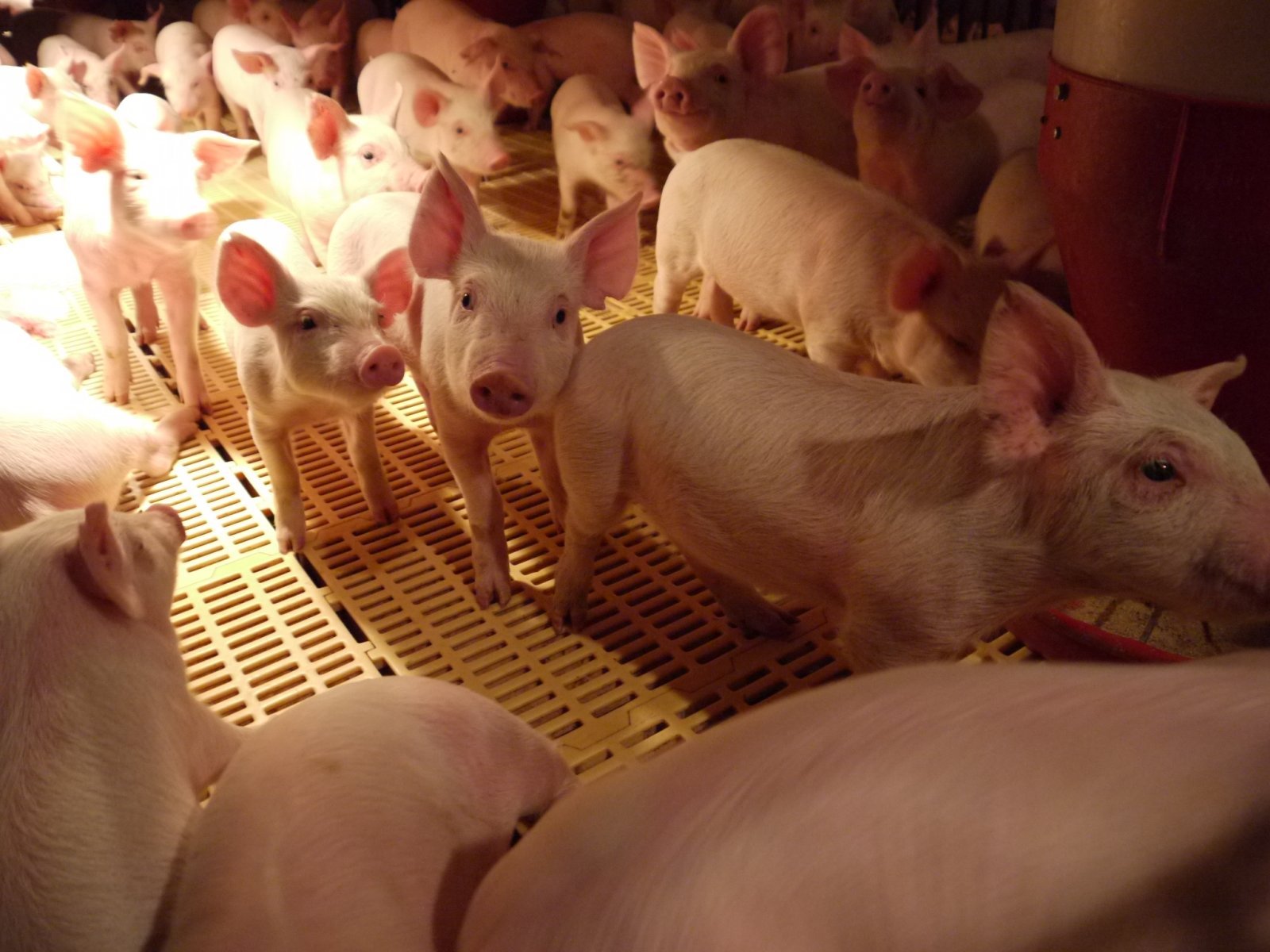
Mutilation and Confinement
Pigs’ short lives are defined by a series of enclosures: weaner, grower, and finishing pens. They spend their entire lives in these extremely crowded pens on tiny slabs of soiled concrete.
These intelligent animals become increasingly agitated by their deprivation and confinement and often attack each other out of frustration. In order to prevent piglets from injuring each other, their tails and the ends of their teeth are cut off. The males are also castrated. All of this is done without providing the animals with any pain relief.
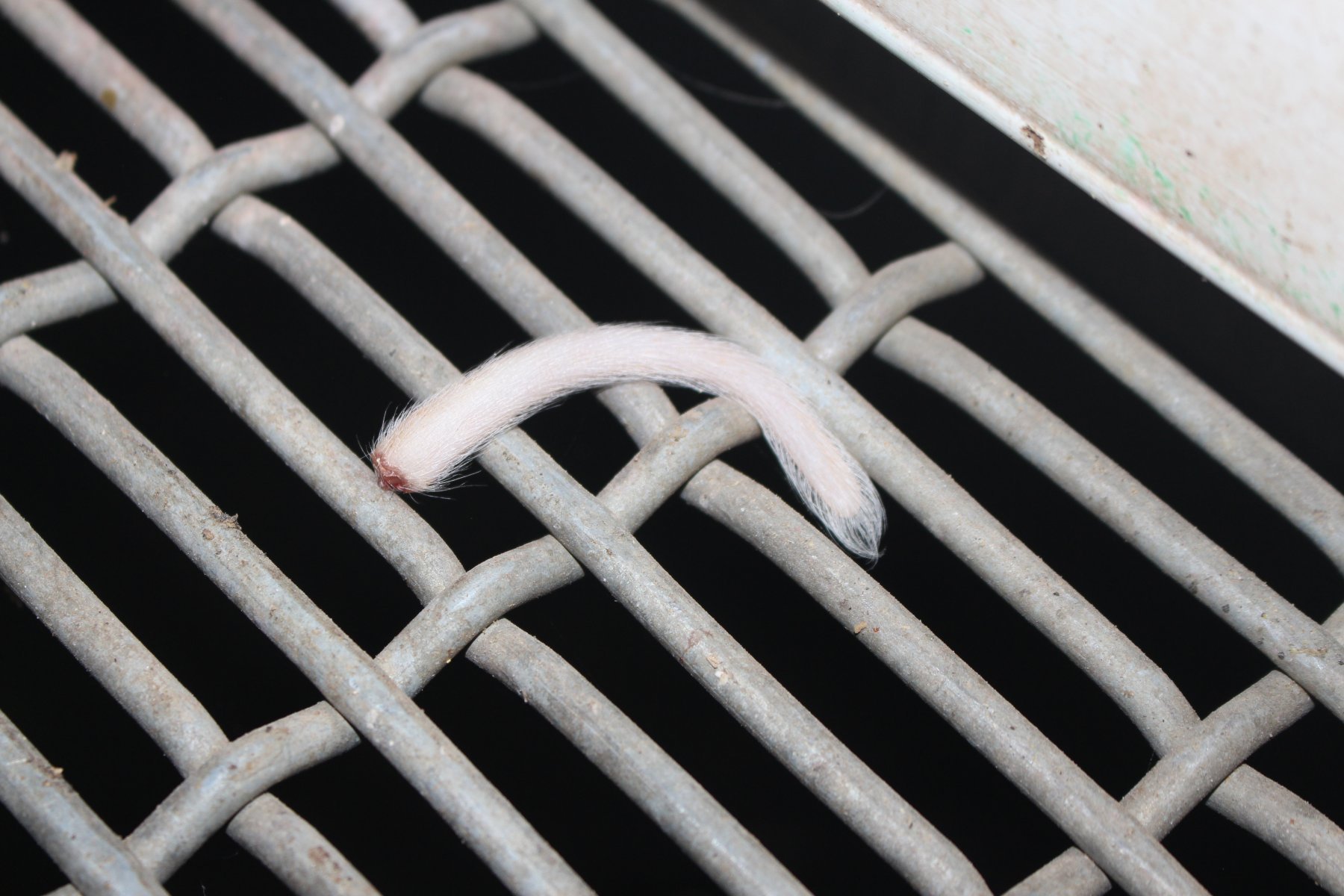
Gas Chambers
At just 6 months of age, pigs are forced onto trucks and transported many kilometres to the slaughterhouse. Some die of heat exhaustion and others are injured during the journey.
The most common methods used to stun pigs are high-voltage electric shocks or exposure to high concentrations of carbon dioxide. Gassing pigs causes acute respiratory distress and does not render them unconscious immediately. Video footage from these gas chambers has revealed how pigs scream and writhe in pain as they suffocate. The RSPCA has found that most pigs would prefer to go without water for 72 hours than experience exposure to carbon dioxide.
All too often, these methods of stunning are ineffective and workers slit pigs’ throats and dump them into scalding-hot water while they’re still fully conscious.

How to Help Pigs
It’s the demand for pork, bacon, and ham that causes pigs to suffer this way – and it’s within our power as individuals to help save them from this cycle of abuse.
Animals Used for Food:
Environment | Free Vegetarian/Vegan Starter Kit | Cattle | Chickens | Fish | Sheep | Dairy Cows
Animals Are Suffering in Laboratories – Help Save Them Now
